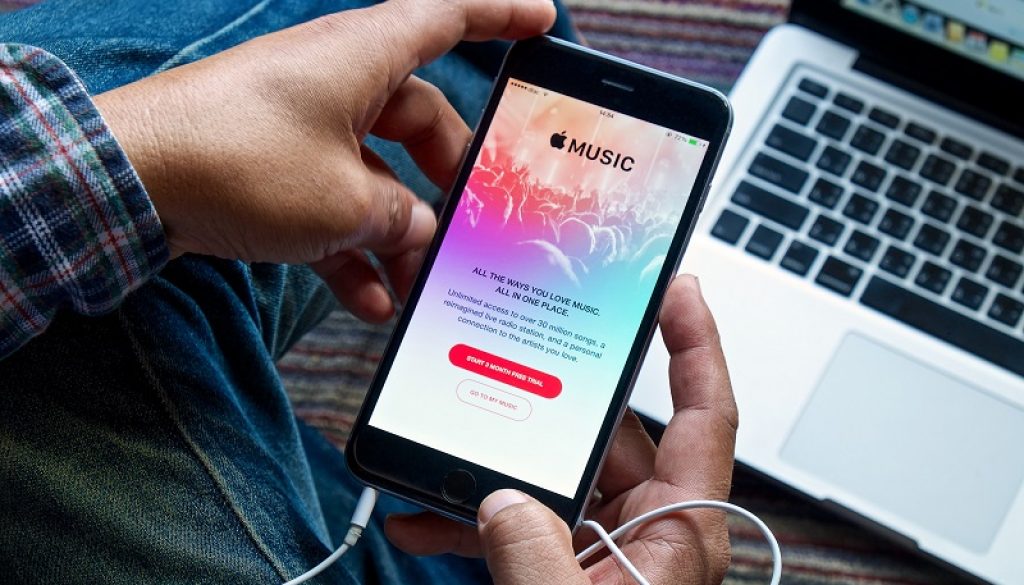What Does the Future of Music Streaming Look Like?
The internet revolutionized the music industry for artists and listeners alike. The rise of music streaming services has caused fans to move away from hard-copy purchases and instead opt for monthly fees in exchange for an unlimited catalog of music to choose from.
Today, leading names of this platform, such as Spotify, Apple Music and SoundCloud, are some of the largest music distribution companies in the world. Many artists are opting for exclusive online releases over record store publications.
However, as has been proven several times already, this relatively new phenomenon is still in a turbulent initial stage. With so much uncertainty across the music streaming industry, what will the future hold for musicians and fans who use these platforms?
Death of the Major Label?
A clear advantage of the internet’s involvement in the world of music is the opportunities it’s afforded to unsigned and independent artists. Thanks to all these new and innovative channels for sharing and promoting work, there is no longer a need for the backing of major labels to gain traction in the industry. While this is largely beneficial, many are predicting it could cause an irreversible change in the industry, which could alter the face of music as we know it.
The major labels hit hard when they took down prolific torrenting service Napster, and it looks like they are now bringing their fight to legal music streaming. Spotify has already lost the support of Universal, Warner and Sony, three of the biggest recording giants in the industry. However, with the sites constantly increasing in popularity and physical CD sales on the rapid decline, if an agreement isn’t struck soon, it seems more likely that it’s the labels that will lose out.
More Content for Listeners, More Opportunities for Artists
While there have been many surprise closures and emergency reductions in service—think SoundCloud’s recent announcement that it’s looking for a buyer or Last.fm’s significant withdrawal of services to certain regions—it’s undeniable the industry as a whole is still growing. Recent statistics claim the U.S. saw audio-only streaming figures double in the first half of 2016 alone.
Because of this rise, more and more artists are flocking to the streaming services in order to get their work heard. This means listeners can enjoy a greater and more diverse range of content than ever before. Alongside this, complementary software has been developed, such as the mighty Virtual Private Network, which allows you to bypass the aforementioned region restrictions and get great new music from all over the world.
Similarly, this change has provided a whole range of new opportunities for artists. These include initiatives such as Spotify Artist Aggregators, which helps unsigned musicians to release on the platform, or Apple Connect, which lets you take control of your artist profile and promote your work.
Audiophile Heaven
Another surprising result of the rapid growth in streaming services is the significant improvement in sound quality, an undeniable benefit for both musicians and listeners. While once online platforms were severely lacking in this sector—iTunes was notorious for its 128kbps audio—now streaming sites offer quality that even outrank the 16-bit audio of CDs.
In particular, Tidal is known for broaching this sound gap by offering users a sharp, 24-bit lossless stream at a staggering 1.4Mbps. Other front-runners in the industry are not far behind, with Spotify reaching 320kbps—practically indistinguishable from CD quality—and Apple Music trailing in last place with a still substantially respectable 256kbps.
While this increase in sound quality remains largely unnoticeable for the average user, especially those who stream straight from their phones, both artists and audiophiles will appreciate the constant progressive move toward a crisper, cleaner and more authentic sound.
Potential Pay Increase
Although for now music streaming seems to be successfully holding back the attacks from the major labels, it doesn’t mean the services will come out unscathed. As more and more artists pull their discographies from the platforms, the pressure to increase the royalties they earn from the services intensifies.
This was only cemented by the release of Tidal, which was set up specifically by Jay-Z with backing from numerous big-name artists to combat the unfair deals they believed they were getting from competitors such as Spotify, Pandora and Apple Music. As the pressure from these leading figures increases, it won’t be long before new deals will be cut across the board.
This won’t be ideal for listeners, as it will undoubtedly lead to a rise in subscription prices, but it will be an exciting development for smaller artists who also release work via these services.
Things are just beginning for music streaming, but already the popularity of these services has far surpassed many other forms of music purchasing. For new artists, it’s an exciting time to be producing work, and the future is set to hold many more advantages along the way. If you’re considering producing work, now is most definitely a great time to get started!
About the Author:
Caroline is an entertainment blogger for Culture Coverage and a life-long music lover. She remembers the days of obsessively tape recording favorite songs off the radio and loves the fact that there are now countless ways to listen to great new artists all over the web.



